FREE Ultimate Guide to Precision Farming
Download the guide and precision farming worksheet template
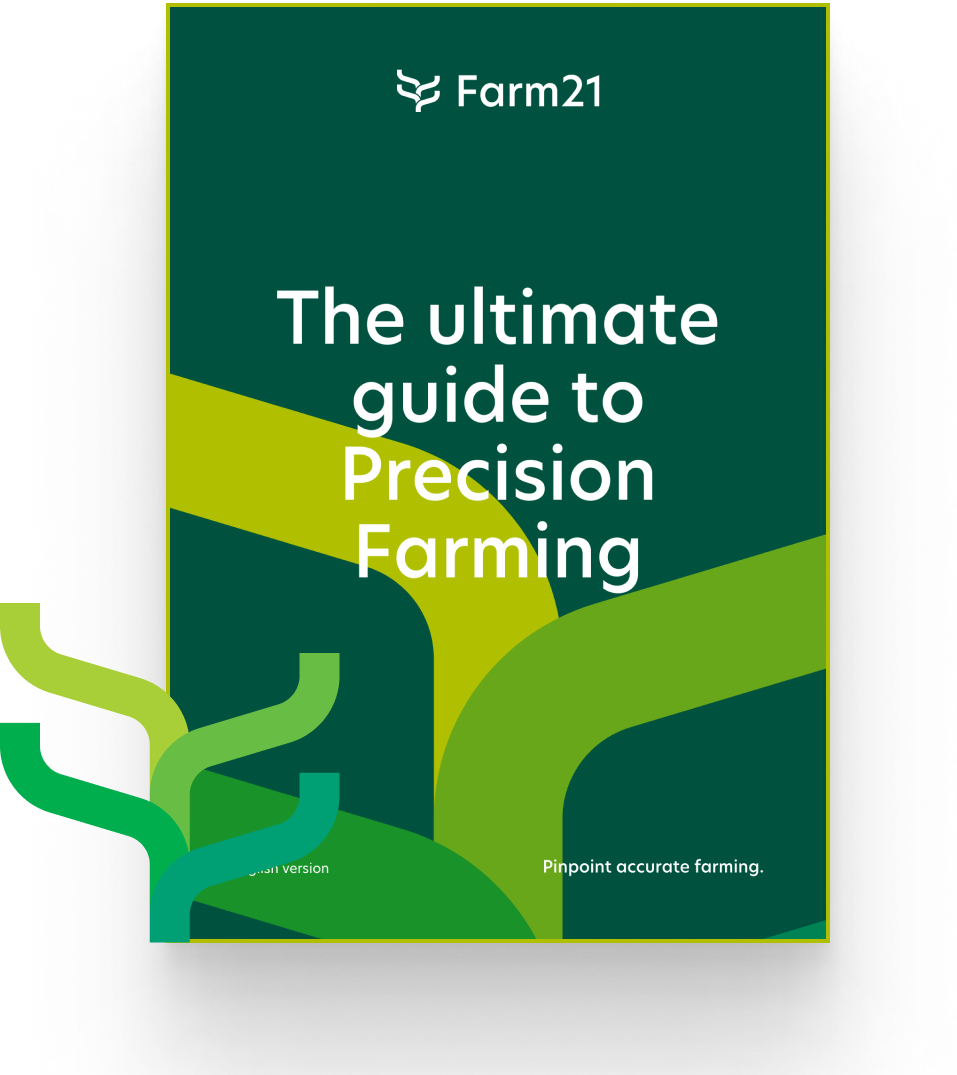
In this guide, you will learn:
Introduction:
The ultimate guide to precision farming
Written by Thomas Houwers and Dana Gelerter
We are living in the era of smart farming. Take a look at what precision farming can do for your farm.
Have you ever heard of precision farming? It has been in practice for over 50 years and is now one of the most popular growing methods in agriculture. Precision farming focuses on the use of technology to apply resources exactly when and where they are needed. In this guide, we will be discussing what precision farming is, how it can help farmers to improve their crop growth, and why it may be the best option for farmers today.
Precision farming has been around since the 1960s when the United States’ Secretary of Agriculture, Earl Butz, introduced a system called grid planting. Grid planting is a planting pattern in which farms are divided into squares and plants are positioned in rows inside each square. This method allowed farmers to have more control over their land and to make the most out of their resources.
Since 1960 precision farming continued to grow in popularity. With faster computers, more affordable electronics, and better data analytic tools, it’s been taking a flight in the last few years. It’s Farm21 goal to help all farmers in making good farming decisions based on data. We allow farmers to make the transition to Precision Farming. This guide is the first step for farmers in that direction.
Download the Precision Farming Guide with the FREE Precision Farming worksheet to plan the next planting season.
Chapters
What is precision farming?
“Precision farming, or smart farming, is the practice of using data to optimize agricultural production. Satellite imagery, sensors, weather stations and other data are used to monitor and analyze soil conditions and manage other resources such as water and fertilizer. This, in turn, allows the farmer to produce the greatest volume of crops at the lowest possible expense.”
Jits Riepma
Agricultural datanalyst at Farm21
The transition to data-driven farming
A lot has changed in the last 100 years when it comes to agriculture. When making decisions, many additional sources of information, like satellites’ data, weather forecasts and more, have been made available for the farmer. But often, he makes the decision himself using eye seeing and his knowledge. Precision farming can help the farmer in this decision-making process.
What are the first steps for precision farming?
Ideally, the farmer would monitor every individual plant in real-time. Then he would always know exactly what his plants need. Fine-grained information allows him to decide how locally he wants to act.
In order to start with precision farming, farmers need to set up goals and choose which measurements will support them in achieving their goals:
1. Goals
The first thing the farmer needs to do is decide which goals he wants to achieve. What are the most urgent problems he is experiencing? How can he increase his yields? How can he better comply with regulations?
2. How to measure?
The farmer needs to choose the resolution and frequency of the data that will be collected.
- Resolution: How fine-grained is the available information? This can include Region, Acreage, Field, Part of Field, Plant.
- Frequency: The frequency of information being updated, giving insight into the correct, current status of that information: Season, Month, Week, Day, Real Time.
3. What to measure?
Precision farming is about having an in-depth understanding of your field and making better decisions.
Some examples of data sources could be drones, weather stations, satellites, and sensors.
These devices might provide you with important parameters like:
4. Organize the data
The farmer needs to choose the best platform to collect, synchronize, and organize data in a meaningful way.
If you want to learn more about this type of platform, please click here.
5. Implement the decisions
The last step is to implement what the data shows. Suppose there’s a part of the field in which the farmer sees dry soil, so he makes sure to irrigate there more. Or, if there is a hint of disease or insects, the farmer can treat it before it’s too late. There are many tools and special machines for precision farming such as precision sprayers, unique tractors and intelligent irrigation systems.
The days of guessing how your fields are doing are over, and farmers can enjoy the new world of data, starting with these main steps for more precise and smarter farming.
The evolution of precision farming (3 scenarios)
The decision-making process in agriculture has changed tremendously in the last couple of years. It has evolved from an era where the farmer had to guess what his plants needed, to an age in which he can manage the field remotely, relying solely on data. We divided the evolution of crop advice into three stages.
The first stage is the traditional way. Here, the farmer relies on visual inspection, weather information, and (agricultural) knowledge. The second stage falls in the category of Generic Decision Supporting Systems. With this, knowledge and insights are supplemented by measurement data from weather stations. The third and most efficient stage is personalized crop advice; fine-grained and frequent data collection from multiple sources, all linked together on one platform that is translated to automated personalized crop advice. This stage brings the most benefits for growers.
For each stage, we looked into the information that precedes cultivation decisions and determined subsequent actions. The results show how great an effect intricate information can have on farming decisions.
Scenario 1 – Traditional
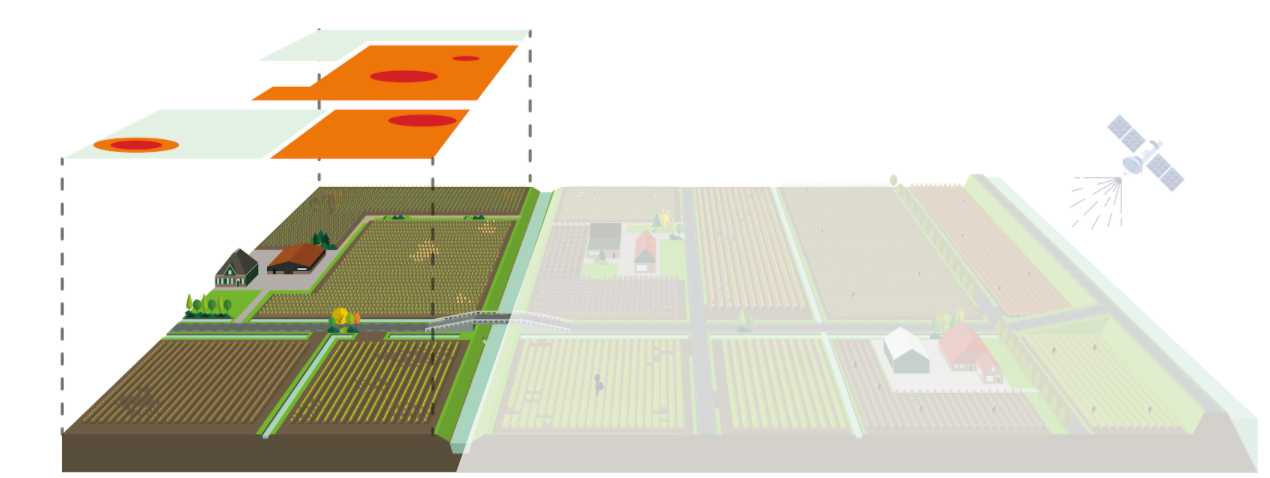
Without data support, decisions come primarily from visual inspection, weather information, and (agricultural) knowledge. With this approach, there is room for improvement. The Wageningen University & Research states that Dutch growers are on average at 80% of their maximum potential yield. If you take all possible reductions of costs into account, there might be an even bigger gap between the average efficiency and potential efficiency.
With the traditional approach, a lot of time is spent on visual inspection – the priority of actions is not optimal, and you cannot take targeted action. Detection of potential problems is delayed and the window to react is short. A lot of work is done pre-emptively or too late (e.g. protecting all your crops from a certain disease right at the start of the season, or acting on a disease only once you’ve visually detected it).
Scenario 2 – Generic Decision Supporting System
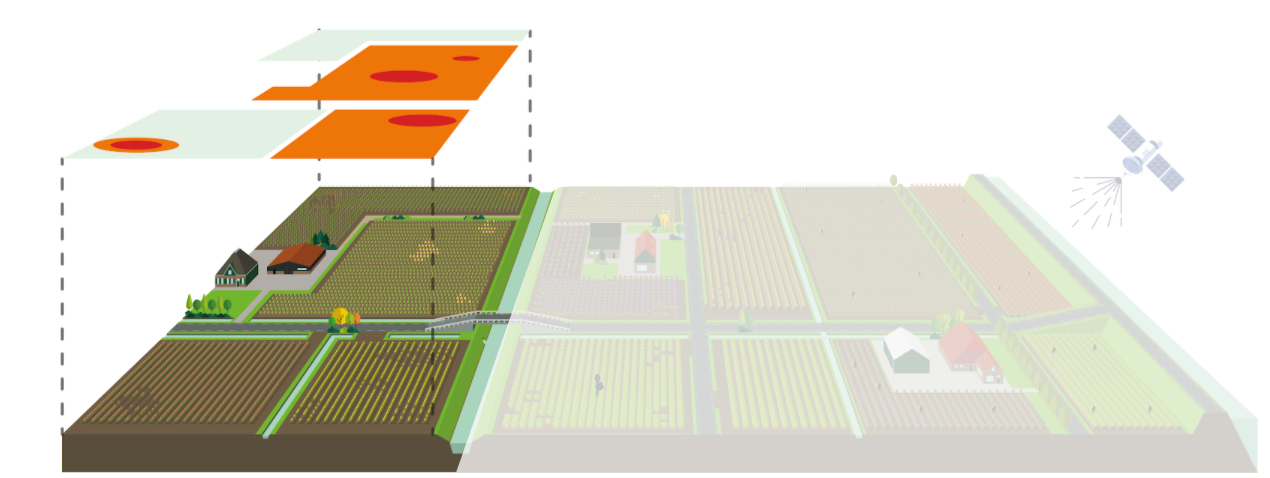
Knowledge and insights are supplemented by measurement data from weather stations. To draw conclusions, Generic Decision Supporting System (DSS) models are used. These are algorithms which describe conditions causing events to occur that need the farmer’s attention. For example: if you have relative air humidity at 90% or higher, and a temperature between 12 and 18°C for a period of 5 days, you have an increased chance of phytophthora infections in potatoes. This approach provides additional supportive insights. It improves the timing and prioritization of cultivation actions. The downside is that the model is static.
Basic algorithms like this use a combination of two or three factors as a basis for their outcomes but have no room to take additional data into account. Also, there is no option for feedback which would allow the user to control/improve the outcome of the models.
Comparing this stage with stage 1 you can see that the opportunity to detect potential problems is earlier, resulting in a longer time to act. The resolution of the data – the scale at which the farmer could potentially perform an action – is still on the farm level, however.
Knowledge and insights are supplemented by measurement data from weather stations. To draw conclusions, Generic Decision Supporting System (DSS) models are used. These are algorithms which describe conditions causing events to occur that need the farmer’s attention. For example: if you have relative air humidity at 90% or higher, and a temperature between 12 and 18°C for a period of 5 days, you have an increased chance of phytophthora infections in potatoes. This approach provides additional supportive insights. It improves the timing and prioritization of cultivation actions. The downside is that the model is static.
Basic algorithms like this use a combination of two or three factors as a basis for their outcomes but have no room to take additional data into account. Also, there is no option for feedback which would allow the user to control/improve the outcome of the models.
Comparing this stage with stage 1 you can see that the opportunity to detect potential problems is earlier, resulting in a longer time to act. The resolution of the data – the scale at which the farmer could potentially perform an action – is still on the farm level, however.
Scenario 3 – Personalized crop advice
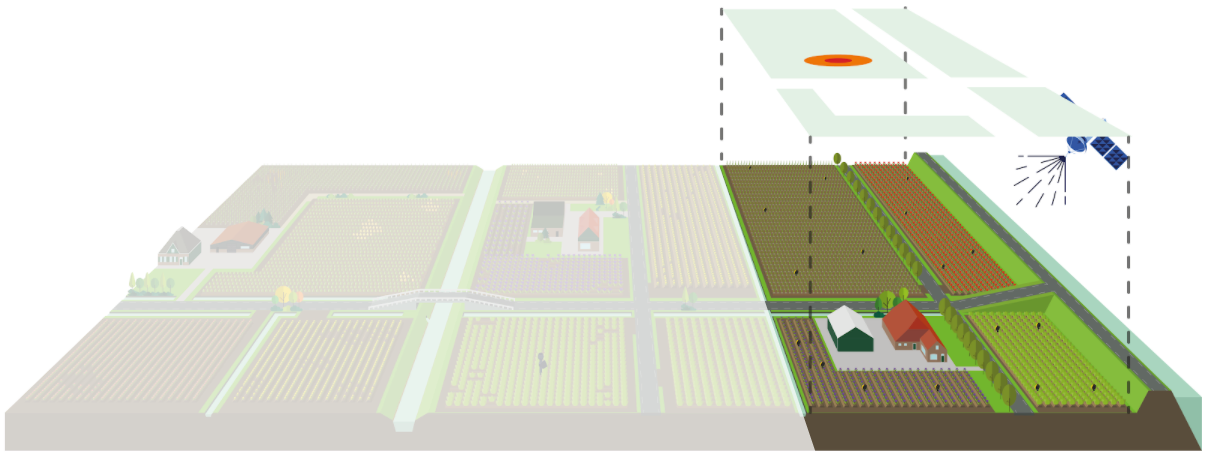
This scenario describes the ultimate vision; fine-grained and frequent data collection from multiple sources, all linked together on one platform. The large amounts of data are backed up by Decision Making Support models, which are further enhanced by machine learning.
Fine-grained measuring allows cultivation actions to be carried out at an extremely precise level. Due to all the information that is fed into the system, and analyses by machine learning algorithms, the level of insights vastly increases. This results in hyper localized, personalized farming advice.
Automated tailor-made cultivation advice is extremely detailed and targeted. It gives the chance to perform each action at the right time, place and quantity to optimize efficiency in yield and the use of resources.
Conclusion
The comparison between the three stages shows the need for fine-tuned data gathering and combining multiple data sources. Only when agricultural data is merged into one platform it becomes truly relevant.
Five benefits of precision farming
There are some areas in life where you have to be precise to be able to do the best job possible. Imagine a doctor who doesn’t know the precise steps for a clinical procedure, or a piano player who doesn’t know the correct tune. Without a doubt, technology made it easier to be more precise, and this is true in farming as well.
Precision farming is the new way to grow crops. Using data and special tools, the farmer can give each plant exactly what it needs. Meanwhile, there are five further benefits for the precision farming process:
1. Economic
When using precision farming platforms and machinery, the farmer can save expensive resources such as water, fertilizer, electricity, and a lot of time. The more precise data the farmer has of his field, the better decisions he can make. As a result, he can achieve higher yields, spend less on expensive farming resources, and use his extra time to be with his family or nurture his farm.
2. Environmental
The most important thing for the farmer is his land. His soil condition will control the amount of yield. Precision farming helps the farmer take care of his land, use less fertilizers, water only when needed, and prevent diseases. When the land is healthier, the water around it is cleaner, the plants are more nutritious, and the earth can live for longer.
3. Traceability
Imagine a situation where a farmer could go back in time and see how much he had harvested two years ago, or remind himself when a particularly big drought occurred. Precision farming platforms can collect that information. It’s also becoming more helpful for farmers to receive help from crop advisors/agronomists. The crop advisor can give the farmer the best advice based on actual data, not according to the farmer’s memory or knowledge. Furthermore, there are some platforms with easy-to-use scouting options.
4. Regulation
One of the main struggles that the farmer deals with is complying with local regulations. By using precision farming methods and machinery, the farmer can keep more products on the protection list and be more flexible according to changes.
5. Communication across the value chain
The farmer has three primary connections he needs to nurture. These are with his farming team, his customers, and his crop adviser/agronomist. With all three relationships, precision farming platforms can play a huge role. The team can easily access the field information to add notes and follow changes. The customers can better understand the products the farmer grows, and will appreciate the farmer’s transparency, therefore gaining added value. The crop advisor or agronomist can better see and learn about the farmer’s fields and track their advice.
It’s not a surprise that more farmers are starting to apply precision farming metrics to their fields. These benefits are suitable for all people involved in farming.
What tools do you need for precision farming?
Back to top
Different companies provide sensors and platforms for precision farming. We recommend choosing one that can provide you with the “densest” data possible while still being economically viable. You need to look for something that combines sources like sensors, satellites, scouting and weather to prevent switching between many tools.
When selecting hardware/sensors it’s also essential to select sensors that can measure a wide range of parameters and still provide a good business case. You want to make an Return of Investment as quick as possible. So look for something that measures a lot, for a reasonable price.
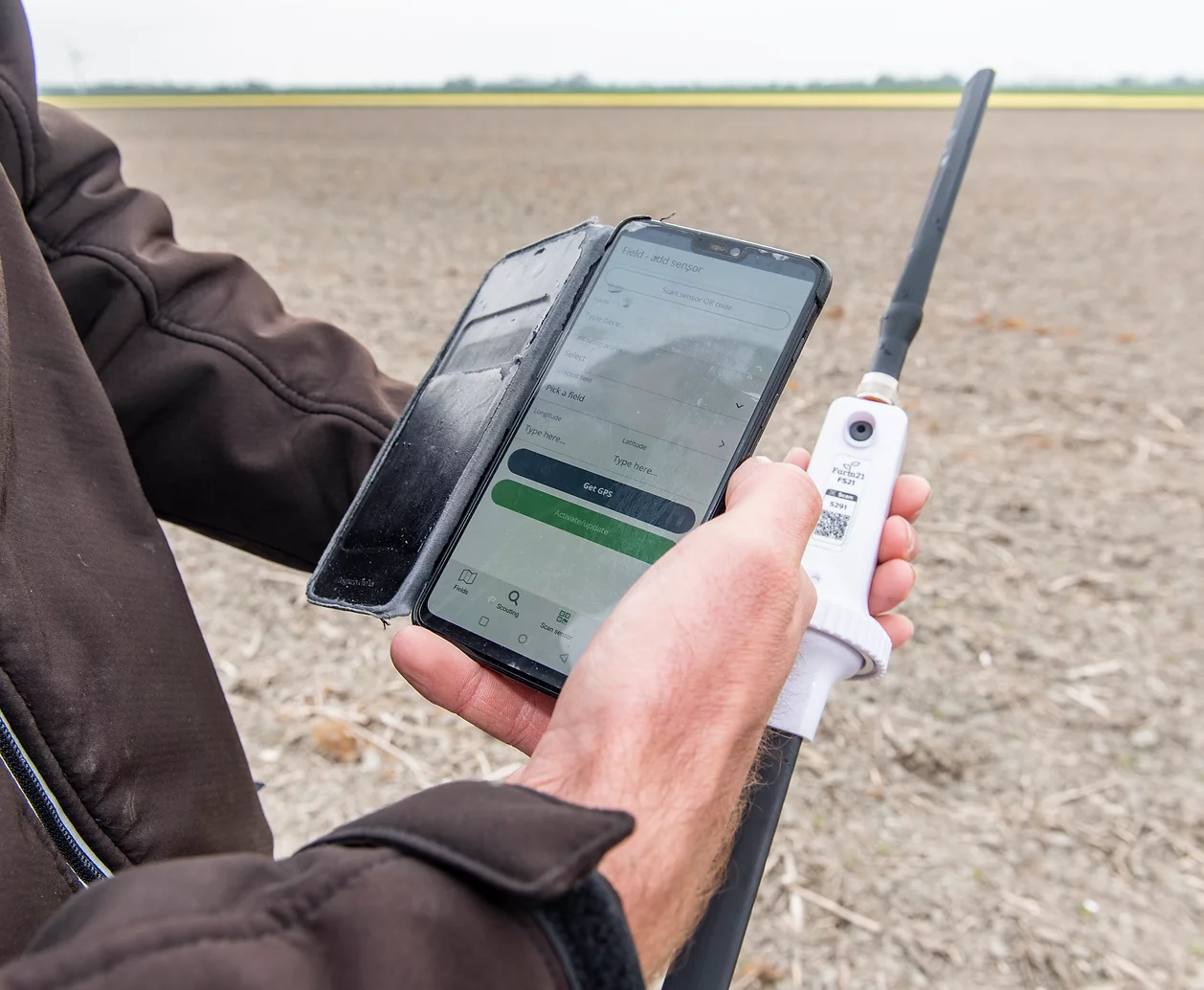
A scouting app is another useful tool to have. It allows you to have all your scouting reports in one place, instead of various other communication platforms.
Scouting app benefits include:
- Well-structured data that you can filter
- One simple and easy-to-use platform for everything you need
- Easy to share and collaborate with external stakeholders (crop consultants, researchers etc.)
- Benchmark/compare with other growers in the region
- Season over season analytics
- Correlations between scouting reports and condition measurements
-
What can you do with a scouting app?
- Log a growth, disease, weed, insect or water report to keep track of your crops during the season and for later reference
- Attach a photo to your report for later reference
- Share scouting data between crop consultants/agronomists and growers
- Enter a score for every report (BBCH scale or severity index) to quantify them
- For Farm21 customers: correlate your scouting data with your sensor condition measurements
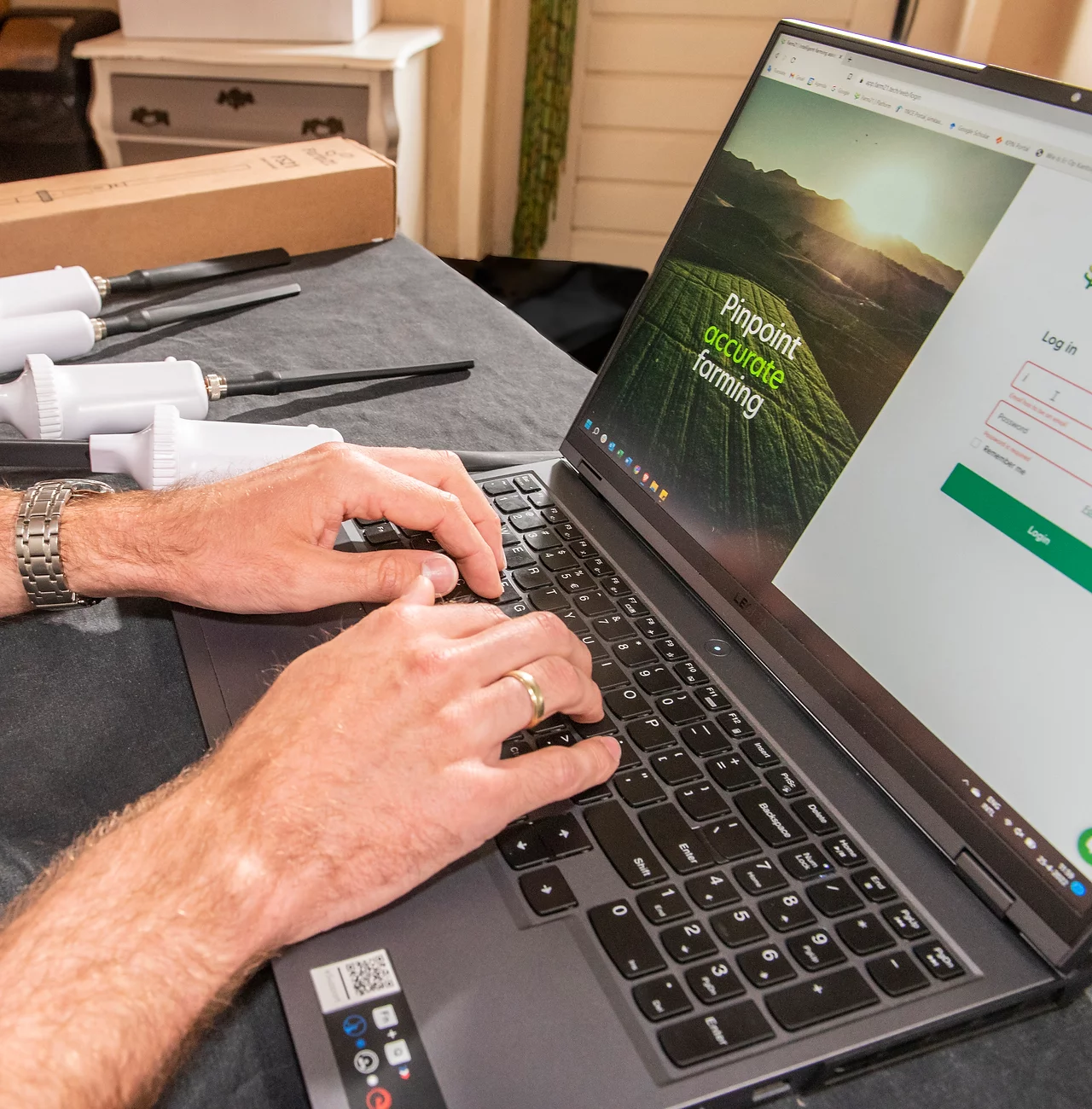
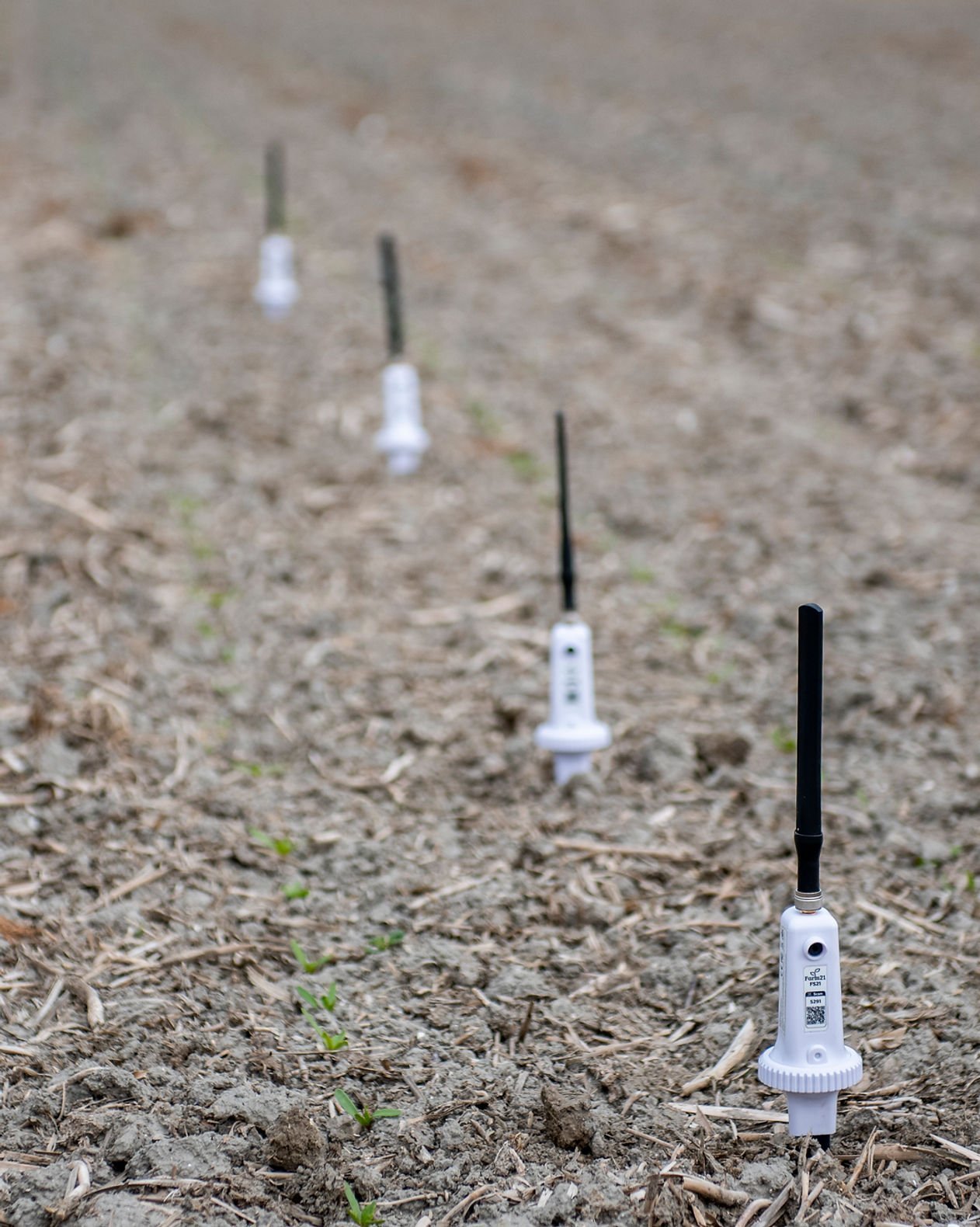
When talking about precision farming tools, we are usually referring to two sorts. One is for collecting data from your fields and plants. The other category of tools consists of the platforms where you can analyse the data.
For example, a farmer installed ten sensors in his field and connected them to a platform that then provides some insight into the data generated. A week later, the farmer notices that one sensor measured a low percentage of soil moisture. He then used his smart irrigation system to irrigate the exact spots in the field that needed attention, and he made sure the water balance in his fields was adequate across the board.
Precision farming machinery is constantly evolving, and there are many companies that produce special farming tools. Among the more popular instruments are semi-automated tractors and variable dosage rate sprayers.
These are some other tools to get started with precision farming and that can be helpful to the farmer in making the right decisions.
Sensors are some of the most important tools a farmer can deploy to continuously monitor crops for potential risks The more sensors the farmer installs, the more localized data will be generated. Due to local differences in soil type, placement issues and field consistency, the measurement from a single sensor does not reflect the status of the field accurately. So, we do recommend adding multiple points inside a single field. Gathering information with high precision allows localized actions (with all their cost and yield benefits included) as well.
An easy-to-use data platform that presents the right insights – once the farmer installs sensors, a platform can provide access to information about the field in near real-time. Some of these platforms also generate actions and warnings, plot historic data in graphs, perform AI-assisted analysis, and provide decision-making support. Some might also enable you to share data with crop consultants or other stakeholders.
How can you receive a return on your precision farming investment?
This is a common question which is easy to answer – theoretically. Smart Farming generally optimizes farming practices. This optimization either reduces costs by saving resources, increases income due to a higher yield per hectare, or both.
Costs for farmers can be roughly divided as fixed and flexible costs. Fixed costs entail land leases and depreciation of machinery. Flexible costs are those involved in actions a farmer performs for the cultivation of his crops, from sowing to post-harvest.
Precision farming allows farmers to optimize these flexible costs as it provides better allocation of resources like water, crop protection, fertilizer, fuel, and labor/time.
Increased revenue per hectare is achieved by the improved growing conditions. These in turn were provided by the actionable insights which were a result of the smart farming solutions. The better growing conditions cause less yields to be damaged by diseases or other reasons.
Earn back your investment within one growing season
Let’s take two Dutch farmers as an example – one with a high value cash crop and one with a lower value cash crop. A general rule of thumb is that flexible costs per hectare are roughly 15% of the revenue per hectare. The first farmer grows red cabbage which has a revenue of €15,400 per hectare (per growing season). His flexible costs are €2,310 per hectare.
Due to the smart farming techniques installed he irrigates his crop 9 times, which, without the insights, would have been 10 times. He reduces the number of times he has to spray crop protection and uses less of the substance in the remaining passes. All in all, he optimizes his flexible costs with 10%, while maintaining optimal growing conditions. These optimal growing conditions increase the crop yield and reduce crop defaults, increasing the total revenue per hectare by 3%. He saves €231 and increases revenue to €492, resulting in an increase of €693 per hectare.
To get these results the farmers need a high data density and specific field insights. This is where our solution excels. Let’s assume that both farmers installed one sensor per hectare. The annual costs (with a depreciation of three years) of Farm21 would be €93 per hectare. This, as well as the other possible benefits, is a perfect deal for the farmer. Even if the savings or the increase in revenue are half of the scenario above, our solution can make a return within one growing season.
The second farmer grows sugar beets with revenue of €4,530 per hectare; flexible costs (15%) are €680. Let’s assume that he’s able to gain the same benefits as the red cabbage grower; 10% reduction of flexible costs, 3% increase in revenue. This results in an increase of €204 per hectare.
To get these results the farmers need a high data density and specific field insights. Let’s assume that both farmers installed one sensor per hectare. The annual costs (with depreciation of three years, and 1 sensor per hectare) of for example a Farm21 sensor would be €93 per hectare. This, as well as the other possible benefits, is a perfect deal for the farmer. Even if the savings or the increase in revenue are half of the scenario above, our solution can make a return within one growing season.
A farmer who invests in his tools knows that he will save a lot of money and resources. Managing the budget is a tough job and every euro counts. Investing in precision farming sensors and a platform is one of the best investments a farmer can make.Time and money can be saved, but it is also good for the environment, tracking, dealing with regulations, and for the farmers’ relationships.
Case study – FruitNL uses Farm21 sensors to improve crop irrigation
FruitNL is a company in the Netherlands that grows fruit. By using the precision farming sensors, they can maintain soil moisture at the right level and prevent overwatering.
Daan Nieuwkoop, a fruit picker at FruitNL, and Gijsbert Hakkert, a technical advisor at CAF, explain how they use sensors and emphasize how a lot of sensors can lead to reduced costs.
Case study – FruitNL uses Farm21 sensors to improve crop irrigation
Planning plays a significant role in precision farming. The worksheet has two parts. The first part a farmer will need to:
- Fill in analysis details
- Evaluate past season
- Choose areas to focus on in the upcoming season
- Define your goals for the upcoming season
The second part is where the farmer will have a clear structure in which he will define:
- Potential issues that he wants to address this season
- Parameters he wants to monitor
- Actions he needs to take
- Data sources he needs access to
The secret to good planning is to make it as detailed as possible. At Farm21 we created a worksheet specifically for this purpose, so the farmer can get the most out of his preparation for the upcoming season (or during the season if he didn’t do it yet!). The farmer can fill it in himself or together with his crop advisor.
Precision Farming worksheet to plan the next planting season
As you have learned in this guide, there are certain levels of precision agriculture. A grower can invest a small amount and start with a few sensors, for example. Using these tools, the farmer can handle it at a much more local level, saving time and resources. Moreover, if used properly, best practices and continuous monitoring can increase yields.
Also, take a good look at the machinery you have at your disposal, these also determine the precision with which you can work on the plots. The most optimal scenario would be that you can act per plant (automatically) in the best way. But until then, we may already be able to help you a step ahead!
We would love to help you more and tell you about our products. Please visit our website farm21.com Or send us an email at [email protected]
